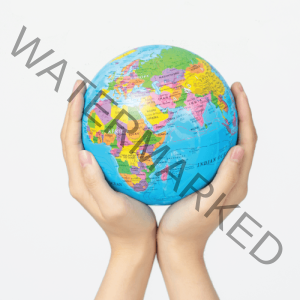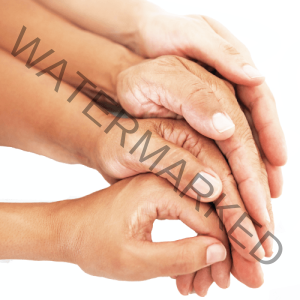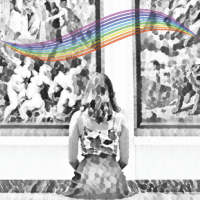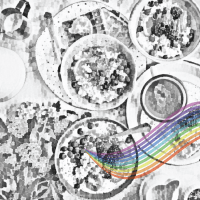
LGBTQIA+ Travel Guides:
Destination Sao Paulo
- Atilla Tiriyaki
- Average Reading Time: 20 minutes
- Travel
- articles, atillat, guides
Sao Paulo is one of the most gay-friendly cities globally and home to the continent’s largest pride parade each year. The subtropical climate, diverse community and stunning scenery offer visitors a wide range of options. Whether it is visiting any of the hundreds of golden beaches or taking in the culture within the city, Sao Paulo never fails to disappoint. With a well-known and established gay area, known as the Jardins, the city is generally safe, and with many Brazilian and Sao Paulo residents being simpatizantes, all contribute to making it a top destination for LGBTQIA+ individuals from around the world
Located in Brazil within South America, Sao Paulo is both a city and a state. The city of Sao Paulo consists of the metropolitan and Greater Sao Paulo areas, making the combined area the fifth largest city globally. The city is also the largest in Latin America and the most populated in Brazil. It is estimated that in 2021, Sao Paulo has over 33.9 million residents living within the 96 districts, 32 boroughs and 9 zones. The city has played an important role in Brazil’s economic growth over the past 100 years. The coffee production expansion helped give Sao Paulo the megacity and powerhouse status within Brazil. The city is steeped in history. Though often seen only as a city-break, it is often not well known that Sao Paulo’s extensive transport infrastructure connects the city to stunning beaches and onward domestic access to all Brazil offers.
The city is 1,521 square kilometres or 587 square miles, is located in the southern hemisphere and has a humid subtropical climate. The summer months typically start in December until February, where the average temperatures are hot, around 30 Celsius or 86 Fahrenheit. Typically, it will rain every day during the summer months. The month of March is considered the end of the rainy season, and November is the start. Though generally warm, the history and diverse cultural mix make Sao Paulo a fun and exciting city to explore any time of the year.
Some interesting facts you might not know:- Sao Paulo has 21.6 million people living in Greater Sao Paulo and 12.3 million living in the city, making it the largest Portuguese-speaking city in the world. The city of Sao Paulo is 24 times larger by population than Lisbon in mainland Portugal
- Though Brazilians and Portuguese people speak the same language, the dialect is known as português brasileiro. The main difference in the dialects is in the way the language is spoken. One such example is that Brazilians will pronounce their vowels in a longer and broader way
- Sao Paulo was named after the apostle Saint Paul of Tarsus. The saint was known for spreading the teachings of Jesus in the first century. Sao means saint, and Paulo means Paul in Portuguese
- Sao Paulo was officially founded on January 25, 1554, by Jesuit missionaries, and the day, known as Aniversário de São Paulo, is celebrated in the city each year
- Sao Paulo was referred to as the locomotive of Brazil in the 1940s and 50s. It was given the title given the city’s importance as a hub and seen as pulling the rest of Brazil in terms of economic success
- People from the city are known as Paulistanos. Anyone from the greater area or state is known as Paulistas
- Sao Paulo’s Latin motto is Non-ducor, duco, which means I am not led; I lead
- Each year, Sao Paulo hosts the largest Pride parade in South America. The parade known as Parada do Orgulho LGBTQ de São Paulo attracts over 5 million people, and the Pride parade takes place in the Avenida Paulista in the centre of the city
- Sao Paulo is known for its crazy road traffic. As a result of the traffic, the city now has one of the largest number of helicopters globally. The city has over 200 helipads and 700 flights taking place each day across the city
- Sao Paulo has a diverse community; it is estimated that over 50% of the city’s residents have full or partial Italian ancestry. Such a high percentage has meant that Brazil has the largest Italian population outside of Italy; the number of those of Italian descent is greater than any Italian city, including Rome
- Sao Paulo is the most popular tourist destination in Brazil. In 2019, the city welcomed over 2.4 million tourists
- Just under 10% of Sao Paulo’s population have part or full Japanese ancestry. The Japanese community’s presence can be found throughout the city, with over 600 Japanese restaurants and an estimated 12 million sushi sold monthly
Sao Paulo city is located in south-eastern Brazil within Sao Paulo state. Many of the flights from Europe will usually take over 11 hours, and both direct and indirect flights are available. From North America, it will take under 15 hours to Los Angeles, 10 hours to New York and over 16 hours to Vancouver. If you plan to take a domestic flight, Iguazu falls take one and a half hours. Rio de Janeiro will take around an hour, and you can fly to the Amazon rainforest in under six hours.
BY AIR- Guarulhos International Airport (///buck.abruptly.myself – GRU (IATA) | YSSY (SBGR)) is an international airport, the busiest in Brazil, handling over 40 million passengers each year. The airport is located 25 kilometres or 15.5 miles from the city centre of Sao Paulo. The airport is the main international hub for LATAM Brasil, Gol Linhas Aereas Inteligentes and ITA Transportes Aereos. The busiest routes to and from Sao Paulo are Santiago in Chile, Miami and New York in the USA, Buenos Aires in Argentina and Madrid in Spain. The most popular method of getting to the airport is via train using Line 13 (CPTM), also known as the Jade line. The train takes approximately 45 minutes from the centre of the city and trains run every hour. The airport train departs from Engenheiro Goulart station, located in the north-eastern part of the city. To connect to the train, you will need to take a bus service from the airport, which takes around 10 minutes. Line 3, the red line of the Sao Paulo Metro, will take you part of the way. The closest subway station to the airport is Tatuapé; however, you will need to take a bus (257 Guarulhos) for the rest of the way. Several bus routes and services operated by EMTU are available to various parts of the city, known as the GRU Airport Suburban Lines and Executive Lines. Private hire vehicles are available within the arrival’s terminal. Journeys to the inner-city from the airport typically take approximately 40 minutes and cost anything from 40 US Dollars, which will depend on your destination
BY SEA
- Porto de Santos (///food.clues.cutback) is the main port in Brazil and one of the busiest in Latin America. The port is used by many of the major cruise lines offering access to Sao Paulo. The port is approximately 90 kilometres or 56 miles from Sao Paulo city centre and takes about two hours. Several coach/bus services operate a service from the Sao Paulo city centre to the port. The transfers can be arranged using services such as Busca Onibus (https://www.buscaonibus.com.br/). The port has convenience stores, food outlets and a money exchange centre. If you plan to change up your money when arriving at the port, be prepared for long delays due to demand. Outside of the main terminal buildings, several operators offer transfer services that can be purchased on the day; however, to avoid disappointment, it is advisable to book before arriving
BY TRAIN
- There are seven lines and 94 stations connecting Greater Sao Paulo and the city. The lines run a total length of 273 kilometres or 169.6 miles of track
- Luz Station (///bind.appeal.sulky) is the main station located in the centre of the city. The impressive building is a well-known landmark within Sao Paulo’s skyline, and the clock was once used as the main source for all clocks throughout the city. Trains are generally not as popular as buses; however, many iconic and scenic train routes can be found throughout Brazil. The Luz station connects many of the stations located throughout Greater Sao Paulo. However, there are currently no intercity services available, as most routes are used to transport cargo. The city has a number of construction projects underway, known as Trens Intercidades. The proposed intercity services will connect Sao Paulo to Sorocaba, Santos, Campinas, Americana and São José dos Campos
BY BUS
- The main bus station in Sao Paulo is known as the Governor Carvalho Pinto Tietê Terminal (///country.tube.roses), which is located in the Vila Guilherme district of the city. The Tietê bus terminal is the largest in Latin America and the second-largest in the world. The terminal is open 24 hours a day, seven days a week and offers many domestic and international routes. The terminal is served by over 60 bus operators, operating around 300 lines, many offering routes to the other states within Brazil and international routes to countries such as Argentina, Chile, Paraguay and Uruguay. The station connects Sao Paulo to 1,033 cities, 21 Brazilian states and four surrounding countries. For more information and to view the various routes available, visit Busca Onibus (https://www.buscaonibus.com.br/)
Interactive Airport Terminal Maps
- The Sao Paulo Metro consists of 8 lines and 80 stations. The Metro de Sao Paulo runs from north to south and east to west and connects the centre with all surrounding areas. A unique colour references each line from Blue (Azul) to Lilac (Lilas). The metro runs from 4.40 am until Midnight Sunday to Friday and from 4.40 am to 1 am on Saturdays and Sundays. The metro system uses a card system known as the Fidelity Card, where you can preload credits on the card. The card costs R$ 2.00 and a minimum recharge. The card can be purchased at most metro stations or the various lottery shops found throughout the city. The Fidelity Card is valid if you only plan to use the metro during your stay. However, the Bilhete Unico or single ticket would likely be better if you use the metro and bus network. The cost for a single journey will vary depending on the time of day and distance travelled; however, the price will likely be around R$ 3.50 or more. To learn more about the single ticket, see the bus section below. To find out more about the Fidelity Card, click here to visit the Metro SP website (http://www.metro.sp.gov.br/en/your-trip/tickets-cards/fidelity-card.aspx)
- The train network within Sao Paulo is operated by CPTM (Companhia Paulista de Trens Metropolitanos). The train network consists of ninety-five stations, seven lines and 273 kilometres or 169.6 miles of track. Many lines run from the Bras and Luz train stations and connect greater Sao Paulo to the city centre. The train operator offers a Tourist Express rate to and from the main international airport. The cost starts from R$50 for one passenger and can be purchased at Luz station from 9 am to 6 pm most days. The price for a single journey will depend on the time of day and distance travelled; however, the cost will start from R$3.85 upwards. For more information, visit the CPTM SP website (https://www.cptm.sp.gov.br/bilhetes-cartoes/Pages/bilhetes.aspx)
- The bus network in Sao Paulo is comprised of over 16,000 buses, 1,336 bus routes and covering 500 kilometres or 310.6 miles of bus lanes. The city manages the public and private network, and the operator is known as EMTU (Empresa Metropolitana de Transportes Urbanos). The average cost for a single journey is typically around R$3; however, the price will depend on the time of day and distance travelled. The Metro’s Fidelity Card cannot be used on the bus network; however, you can purchase the Bilhete Unico or single ticket. The ticket allows up to 4 trips within a 3-hour window. The traveller can use it for a single journey on the Metro and three separate bus trips. The order and sequence do not matter as long as it is 3 to 1 on buses and the metro. The total amount charged is R$7.48, where R$4.30 is charged when accessing the metro station and R$3.18 when using the bus. Once the entire fare is charged, you will not incur further costs. For more information about the Bilhete Unico, please visit the Metro SP website (http://www.metro.sp.gov.br/en/your-trip/tickets-cards/single-ticket.aspx#integration)
- The official taxis within Sao Palo are white, black or silver and have a red licence plate. Metered taxis can be flagged down in the street or from the various taxi stands found throughout the city. The taxi will charge a minimum fare of R$4.10 and then from R$2.50 for every kilometre travelled. The cost and charges applied will vary depending on the time of day, and you might be charged for any waiting time. Before you start your journey, it is essential that you establish the likely cost and any charges upfront. Uber also operates within the city as well as several private hire companies
Interactive Sao Paulo Metro
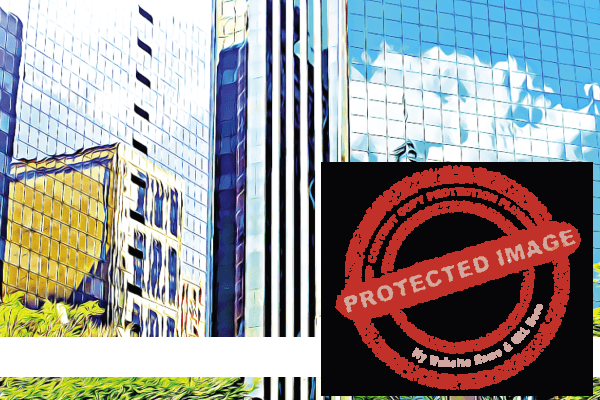
- Hotel Unique (///appendix.field.translated) – located within the Jardim Paulista district, this luxury hotel has eighty-four rooms and ten suites and features a stunning rooftop pool. The pool has a swim-up bar, and the rooftop is also where the stylish restaurant and bar known as Skye is located. The 5-star hotel has a unique boat-like shape and boasts stunning views of the city and Ibirapuera Park. The hotel offers a 24-hour front desk, free WiFi and a steam room/hammam. The Centro Histórico de São Paulo is about 30 minutes away by metro. Ibirapuera Park is a 10-minute walk, and Pinacoteca de São Paulo is a 36-minute metro journey. The average standard room prices are around 250 US dollars, and there are many room options available. For more information regarding the hotel, please visit Hotel Unique’s website (https://www.hotelunique.com/)
- 155 Hotel (///composer.wide.harvest) – located in the Consolacao district, this economical hotel has 72 rooms offers affordable accommodation in a central location. The hotel offers a 24-hour front desk and free WiFi. The rooms feature air conditioning, and guests can enjoy a complimentary breakfast each day. The hotel is centrally located, with Centro Histórico de São Paulo only a 30-minute walk and Ibirapuera Park a 22-minute metro journey. The average standard room prices start from around 30 US dollars per night, and there are many room options available. For more information regarding the hotel, please visit the 155 Hotel website (https://www.155hotel.com.br/)
- Pullman Sao Paulo Vila Olimpia Hotel (///rapid.surfed.sushi) – located in the Vila Olimpia district, the elegant 173 rooms set over 18 floors offers a modern setting in a central location. The hotel has two restaurants, a hotel bar, a cafe/bistro, a fitness room and a health and beauty centre. The hotel is a 4-minute walk from the Shopping Vila Olimpia and a 30-minute walk to the Ibirapuera Park. The average standard room prices start from around 80 US dollars per night, and there are many room options available. For more information regarding the hotel, please visit the Pullman Sao Paulo Vila Olimpia Hotel website (https://all.accor.com/hotel/8938/index.en.shtml)

- Centro Histórico de São Paulo (///start.slim.tactical) is a neighbourhood formed from the Sao Paulo districts of Se and Republica. The picturesque centre is home to many large and impressive buildings, many of which are government offices for the city and the state. The buildings all have played an important role in the city’s history, such as the Pátio do Colégio, where the city’s founders constructed the first building. The area can be reached by bus and via the city’s metro infrastructure. The stations, Metro Luz, is a 5-minute walk, Metro Se is a 14-minute walk, and Metro República is a 20-minute walk
- Ibirapuera Park (///decorate.cattle.jams) is a 390 acre or 158-hectare park located in the Ibirapuera district of Sao Paulo. The Park is the most visited in South America, with over 14 million visitors each year. The Park features many cultural attractions, including fitness areas, a bicycle path, 13 courts, and many playgrounds for children. Several buildings can be found throughout the park. For example, the park is home to the Museum of Modern Art (MAM), Museum of Contemporary Art (MCA) and Afro-Brazil Museum. The stunning Japanese Pavilion was a joint project between Japan and the Japanese-Brazilian community in 1954. It was created to recognise the Japanese community within Brazil and the special relationship they share with Japan. The Pavilion is a replica of the Katsura Palace in Kyoto and was made in and shipped from Japan. The Park is open from 5 am until midnight Monday to Friday and 24 hours on Saturdays and Sundays. The Sao Paulo Metro stations close to the park are Santa Cruz, Vila Mariana, Ana Rosa, Paraíso, and Brigadeiro. Many bus services operate close to the park
- Pinacoteca de São Paulo (///rosette.chains.sharp). The Pinacoteca do Estado de São Paulo, also known as the Pina is one of the most important art museums in Brazil. The museum is made up of a collection of 9,000 artworks collated over 100 years. The 19th-century paintings and sculptures are one of the largest collections in Brazil. Of which includes some of the most iconic artworks created by Brazilian artists. The museum is open six days a week and is closed on Tuesdays. The museum typically opens from 10 am until 6 pm each day, and the closest metro station is Luz Station. For more information about the museum and the latest entry fee, visit the Pina’s website (http://pinacoteca.org.br/en/)
- Itamambuca Beach – Ubatuba (///shocks.elastics.tailspin) is one of fifteen seaside resorts within the Sao Paulo state. Itamambuca is 250 kilometres or 155 miles located north of Sao Paulo. A bus service operates from Guarulhos International Airport (GRU). It offers a service that runs from the airport to the beach, taking up to four hours. Itamambuca is part of the Ubatuba district, which has over 100 beaches. Visitors can enjoy the beautiful beaches, swim, surf or watch the many surf championships held each year. The surrounding area of the beach offers many affordable accommodation offers. For more information about the bus service from Sao Paulo to Ubatuba, visit the Passaro Marron website (https://www.passaromarron.com.br/)
- Mercado Municipal de São Paulo (///poet.backed.written) is the biggest gastronomic enclosed market in Brazil. The market is set over 12,600 square metres and employs 1500 people. The market is comprised of hundreds of stores and restaurants selling meat, fruits, poultry, fish, seafood, pasta, sweets, spices and imported products. The market opens from 6 am until 6 pm, Monday to Saturday, and 6 am to 4 pm on Sundays. The Sao Bento metro station is the closest to the market. For more information about the market, visit Portal Mercado(https://portaldomercadao.com.br/)
The city of Sao Paulo and Brazil are both considered progressive within South America. Brazil legally recognised same-sex marriages in 2013 and have anti-discrimination laws in place to protect people from persecution regarding how they choose to identify. Many areas and districts have a growing LGBTQIA+ community; however, anti-LGBTQIA+ attitudes and beliefs remain in specific groups within Brazilian society. Acceptance regarding LGBTQIA+ identities has been improving nationwide for some time. However, a right-wing government in power and some calling for a return to traditional values often creates a conflict between the law and the individual groups. Most Brazilians accept and welcome the LGBTQIA+ community, and many visitors to the country and city enjoy their stay without any problems or incidents.
The gay area, known as ‘Jardins’, can be predominately found on Rua Frei Caneca. The street begins from the famous Avenida Paulista on one end and Avenida Augusta on the other. The area is home to many LGBTQIA+ bars, discos, restaurants, cafes and even a shopping centre known as Shopping Frei Caneca. The Jardins is considered one of the most expensive and stylish areas within the city. Since 1997, Sao Paulo has hosted an annual pride parade known as Parada do Orgulho LGBTQ de São Paulo, which has become the largest and most attended gay pride parade in South America. Sao Paulo is a welcoming and gay-friendly city. Though often a city break or stopover for any of the many unique attractions across Brazil, LGBTQIA+ individuals who visit the city feel safe and have fun, especially during the weekends.
Even though Sao Paulo is a popular destination for many Brazilians, it is often seen as a short stopover or city break. Those who visit the city quickly realise that you cannot see and experience all that Sao Paulo has to offer in a few days. The city has 96 unique districts, many heavily influenced by the cultures and current and former immigrants who have made it their home. From the Jewish district of Bom Retiro to the Liberdade, home to the large Japanese community, Sao Paulo is diverse. Sao Paulo is a city that can accommodate all budgets, from those looking for affordable accommodation to those seeking luxury and high-end fashion. The city’s nightlife and food culture make it a choice destination for holidaymakers looking for a warm climate and a fun experience.
Though traditionally conservative and religious, attitudes across Brazil have been changing. It is still rare to see gay couples holding hands in many areas across Sao Paulo. However, it has become a familiar sight within districts such as the Jardins. Sao Paulo is worth considering whether you are looking for a fun stopover before going onto another South American destination or looking for an exciting city break. Not always given the credit it deserves, Sao Paulo is a top LGBTQIA+ destination.






